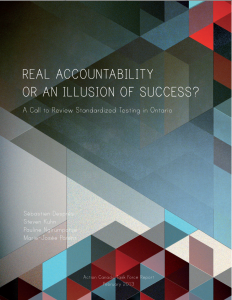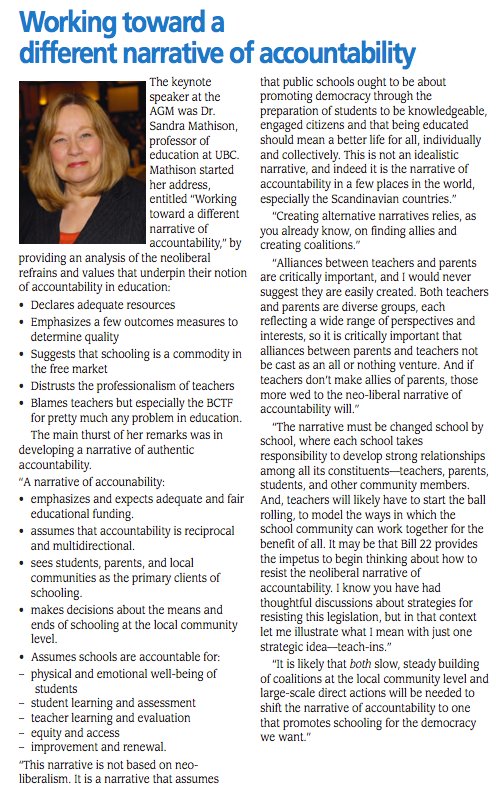One of the hallmarks of any quality evaluation is that it ought to be subject itself to evaluation. Many evaluation schemes in education, such as the test driven accountability scheme, are not evaluated.  The Action Canada Task Force on Standardized Testing has released a report analyzing the place of standardized testing as an accountability measure in Canadian K-12 education systems, using Ontario as a case study focus. “A review of standardized testing in this province and others is not only timely – it’s urgently needed,” says Sébastien Després, a 2012-2013 Action Canada Fellow and co-author of the report.
The Action Canada Task Force on Standardized Testing has released a report analyzing the place of standardized testing as an accountability measure in Canadian K-12 education systems, using Ontario as a case study focus. “A review of standardized testing in this province and others is not only timely – it’s urgently needed,” says Sébastien Després, a 2012-2013 Action Canada Fellow and co-author of the report.
The Task Force offers four recommendations that could be the heart of an evaluation of accountability schemes in K-12 education across Canada.
Recommendations
We recommend that the Ontario government establish a suitable panel with a balanced and diverse set of experts to conduct a follow-up review of its standardized testing program. In particular:A. Structure of the tests relative to objectives
i. The panel should review whether the scope of the current testing system continues to facilitate achievement of education system objectives.
ii. The panel should review whether the scale and frequency of testing remains consistent with the Ministry of Education’s objectives for EQAO testing.B. Impact of testing within the classroom
i. The panel should review the impact on learning that results from classroom time devoted to test preparation and administration.
ii. The panel should review the impact of testing methods and instruments on broader skills and knowledge acquisition.
iii. The panel should review the appropriateness and impact of the pressure exerted by standardized testing on teachers and students.C. Validity of test results
i. The panel should review whether or not standardized testing provides an assurance that students are performing according to the standards set for them.
ii. The panel should review the impact of measuring progress by taking a limited number of samples throughout a student’s career.D. Public reporting and use of test results
i. The panel should review the impact of the potential misinterpretation and misuse of testing results data, and methods for ensuring they are used as intended.
ii. The panel should review supplemental or alternative methods of achieving public accountability of the educational system.
 Follow
Follow


